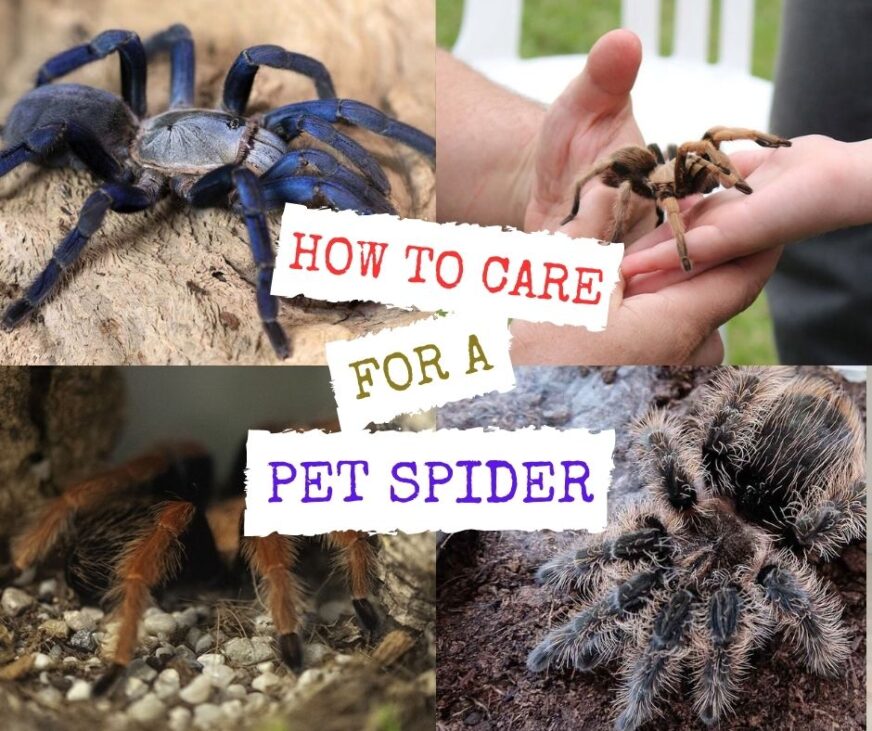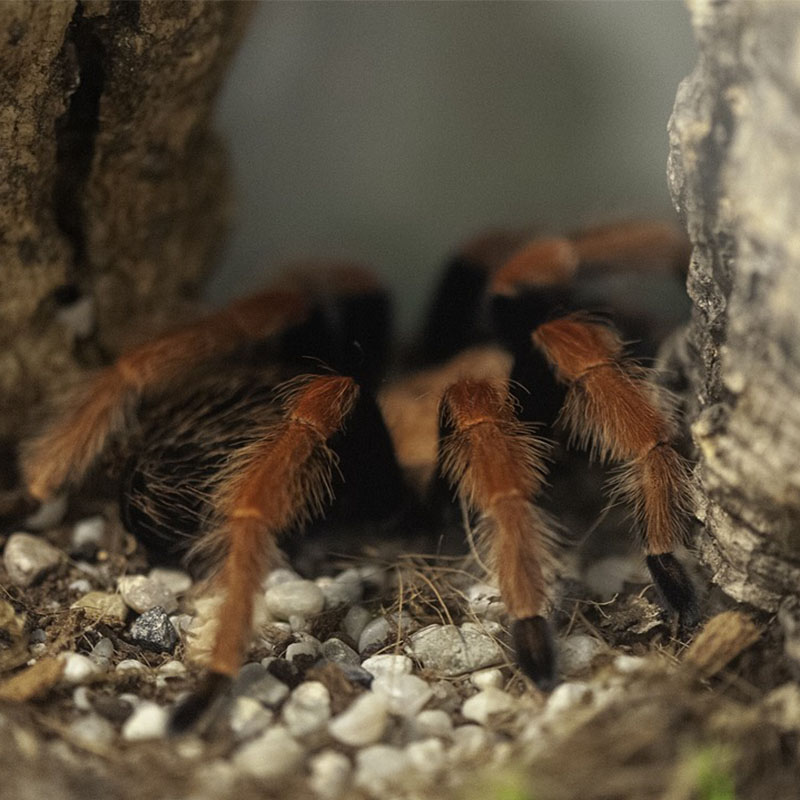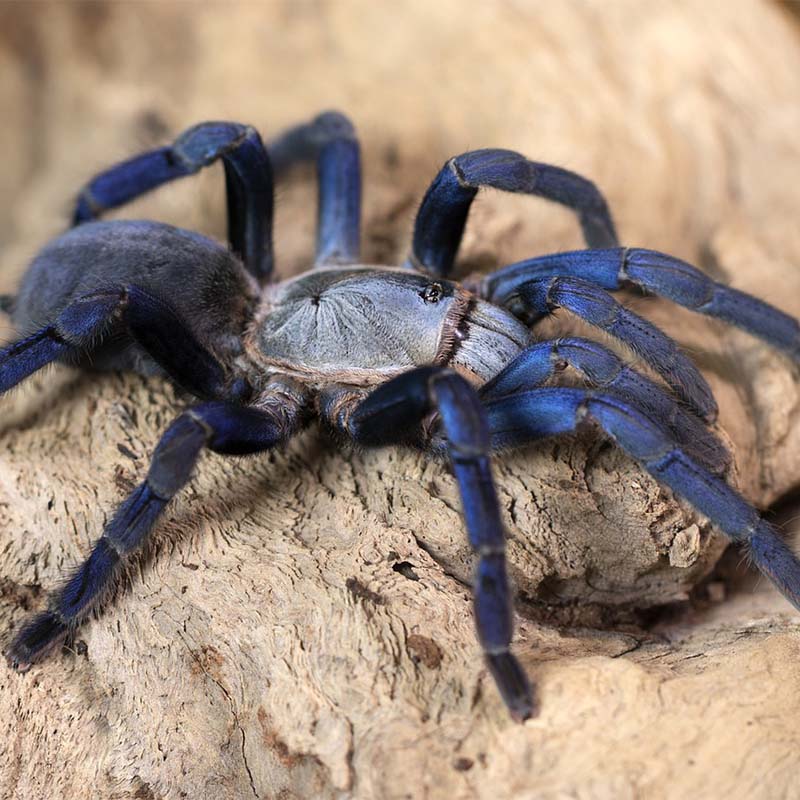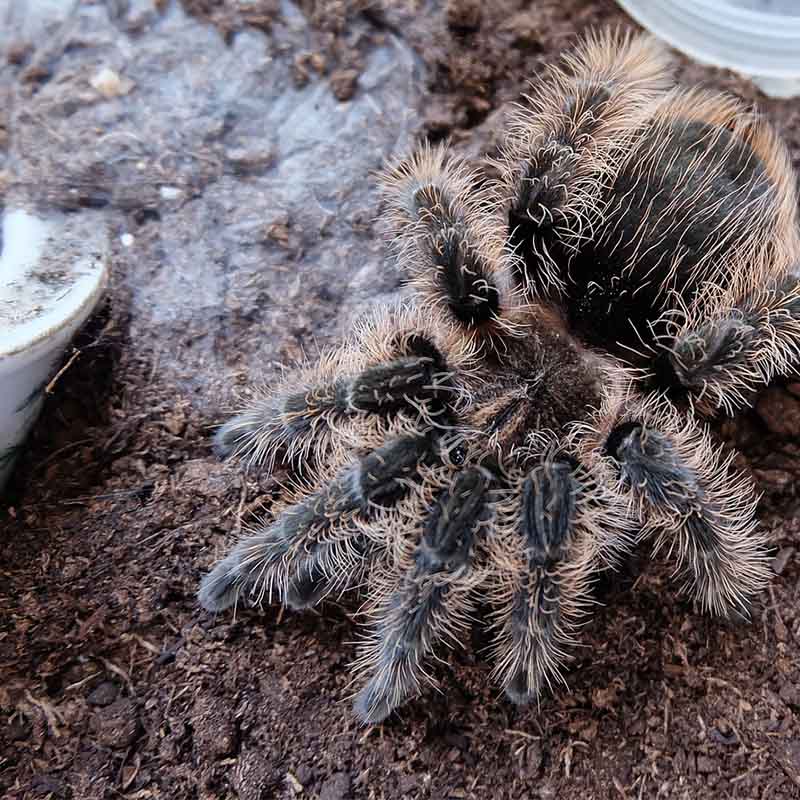info@petprintstudio.com
How to Care For a Pet Spider

Pet spider is becoming increasingly popular, as more people appreciate the unique traits and behaviors of this fascinating creature. If you’re thinking about getting a pet spider, it’s important that you understand their specific care requirements in order to provide them with the best possible living conditions. In this guide, we will cover everything you need to know about how to care for your pet spider, including housing, feeding, handling, and maintenance. By following these simple steps, you can ensure that your new furry friend is happy and healthy in its home.

Housing

The first step in caring for a pet spider is providing it with appropriate housing. Spiders require a space where they can retreat to avoid predators or adverse environmental conditions, so it’s essential that you offer them a suitable habitat. The size of the enclosure depends on the species of spider, but generally, it should be large enough for them to move around comfortably and have access to hiding places such as foliage, rocks, or other decorations. You can use various materials like plastic containers, glass tanks, or even custom-built terrariums, as long as they meet certain criteria. First, make sure the container has good airflow and ventilation, so the spider doesn’t get sick from stagnant air. Secondly, consider using substrates that help regulate humidity levels – coconut fiber, moss, or peat moss work well. Finally, maintain proper lighting inside the cage by installing heat lamps, UVB bulbs, or natural sunlight depending on the spider’s needs. With the right setup, your spider can thrive in its new environment.
Feeding

As carnivores, pet spiders require a nutritionally balanced diet tailored to meet their individual species-specific needs. Understanding what and how much to feed them is crucial to maintaining their optimal health, activity level, and longevity. This chapter will discuss various aspects related to providing appropriate nourishment for your eight-legged friends.
Nutritional Requirements
The dietary demands of different spider groups vary significantly depending on factors like age, size, metabolism, and hunting habits. Some general categories include:
Lactating Females
These spiders need extra nourishment to support milk production for their offspring. Offer them more frequent and larger meals than usual, including live insects suitable for newborn spiders.
Molting Spiders
During the shedding process, spiders cannot ingest solid food but require hydration via water droplets placed on their substrates. After emerging from their old skin, resume normal feeding within a day or two.
Juveniles
Young spiders have higher energy requirements compared to adults due to faster growth rates. Supply tiny pinhead crickets, fruit flies, or other appropriately sized prey until they reach adulthood.
Adults
Adjust portion sizes according to each spider’s size and weight. Overfeeding is just as harmful as underfeeding; observe their eating behaviors to determine ideal frequency and quantity.
Feeding Frequency
Establish regular feeding schedules based on the spider’s life stage and size. For instance, smaller and juvenile spiders usually need offered prey daily or every other day, while larger adults fare better with longer intervals of one to three times per week. Observe your spider’s hunger signals, such as increased movement around the enclosure or vibrations emanated from their webs. If unsure, consult online resources or experts regarding specific breeds and their typical feeding frequencies.
In this section, we will focus on various options for providing adequate fluids and humidity levels in spider enclosures.
Water Dishes
Most pet tarantulas do not drink standing water directly, so it’s essential to offer hydrating opportunities through other means. Create a shallow dish containing fresh water close to the hide area, making sure it does not touch the substrate. Replace the water regularly or when it appears dirty. Alternatively, some keepers prefer to mist the inside of the enclosure instead of using dishes, which works equally well. Both methods serve the same purpose – ensuring that the environment remains moist and helps prevent dehydration.
Substrate Moistening
Soaking the substrate provides constant access to hydration for burrowing spiders like trapdoor or mygalomorph species. Mix coconut fiber or peat moss with water at a ratio of roughly 3:1 (dry mix to wet), avoiding over-soaking. Use a kitchen scale or measuring cup to ensure consistent amounts are added during maintenance sessions. Change out excess liquid after several weeks or as needed if the bedding becomes too soggy or develops mold. Avoid creating conditions conducive to fungal diseases, which could jeopardize your spider’s health.
Humidifier Options
Additional tools exist to supplement natural humidification methods mentioned above. One option is installing a small tray with water below the screen top of the terrarium, connected to a pump that releases fine mist into the air. Another method involves placing a plastic bottle cap partially submerged in water against the screen cover, allowing evaporation to increase humidity levels. Utilizing a hygrometer helps monitor indoor environmental conditions, alerting keepers to adjust parameters as necessary. Remember to research manufacturer recommendations before purchasing humidifying equipment.
Throughout this chapter, we have explored critical components of successful tarantula keeping relating to their habitats, lighting, heating, and humidi and husbandry techniques can help create favorable living conditions to promote your spiders’ long-term health and welfare. By understanding the essentials of their habitat care, you lay the foundation for fostering contented pet tarantulas with fewer medical issues, leading to many happy years together. In our next installment, we’ll delve deeper into handling tips, socialization, and training strategies to establish positive relationships between you and your arachnid companions. Until then, review these guidelines periodically to reinforce best practices and enjoy observing your spiders thrive in an optimized environment!
Handling

Handling spiders requires caution, especially if you don’t have experience with arachnids. Some spiders produce venom, which can cause harm to humans in rare cases, while others have defensive mechanisms that may scare or irritate handlers. Always research the specific spider you plan to handle before attempting interaction to minimize potential risks.
If you decide to interact with your pet spider, take necessary precautions to protect both yourself and the spider. Wear gloves made of material that prevents bites, such as thick leather or silicone. Use tongs, forceps, or cupped hands when transferring spiders between habitats or during cleaning. Avoid touching the abdomen, legs, or fangs directly since most spiders reflexively bite when provoked or startled. Instead, gently grasp the exoskeleton behind the eyes or on top of the thorax to pick up the spider safely. Keep the spider in a secure container if transporting outside of its main enclosure to prevent escape. Be gentle and patient with the spider to build trust over time, allowing it to become accustomed to human contact.
When holding a pet spider, remember not to apply excessive pressure or squeeze the body, which could injure internal organs. Don’t shake or swing the spider, as this behavior stresses the animal and increases the likelihood of a defensive response. Avoid exposing spiders to extreme temperatures or loud noises, as they find these disruptive and distressing. Always return the spider promptly back into its safe haven after handling sessions to allow it ample rest and recovery time.
By establishing positive interactions through careful and responsible handling practices, you can develop strong relationships with your pet spiders while ensuring their continued happiness and welfare.
Maintenance and Cleaning

Maintaining a clean and organized spider habitat promotes the overall health of your pet. Regular cage cleaning helps reduce stress, parasitic infestation and disease transmission. Here are some guidelines for keeping your spider’s home tidy:
Clean Water and Food Dishes
Empty water dishes at least once per week to prevent mosquito larvae growth or algae buildup. Replace food items daily unless otherwise specified based on the type of spider (some tarantulas, for example, eat less frequently). Scrape away uneaten meals and wash bowls or containers used for serving sustenance.
Remove Excess Webbing
Spiders constantly create webs to catch prey or reinforce their homes. Remove visible webbing clumps every few days, especially those found near the bottom of the enclosure where crickets might get stuck. Be mindful not to disturb delicate structures vital for the spider’s survival, such as egg sacs or molting hollows.
Sanitize Enclosures Periodically
Disassemble the entire spider habitat and thoroughly scrub all surfaces with mild soap or specialized reptile/amphibian cleaner. Rinse everything under warm running water and let dry completely before reconstructing the dwelling. Perform full cleanings approximately once every six months or whenever there’s a noticeable accumulation of debris, odor, or signs of illness.
Monitor Your Spider’s Health
Regularly examine your pet spider for any physical changes or irregularities. Watch for unusual color patterns, swelling, lethargy, loss of appetite, or aggression toward prey. These symptoms may indicate health issues requiring veterinary attention. Keep detailed records of your observations and actions taken to address concerns, consulting with experienced keepers or professionals as needed.
In conclusion, taking responsibility for the wellbeing of your pet spiders involves understanding their dietary, housing, socialization, and medical needs. By implementing effective husbandry techniques, you can foster a contented existence for these captivating animals while learning about their intriguing characteristics and behavior. Remember to always act conscientiously towards your pets.
You can also help raise public awareness by sharing information on proper care and dispelling myths surrounding spiders. Through education and compassionate stewardship, we can promote greater appreciation for these fascinating creatures and support their conservation efforts worldwide. With dedication and commitment, owning pet spiders can be an incredibly rewarding journey filled with wonder, joy, and lifelong memories. Happy spider-keeping!
Conclusion
In conclusion, setting up and maintaining appropriate environments for a pet spider requires careful planning and attention to detail. From choosing the right containers and setting up proper ventilation systems to creating optimal temperatures, lighting, and humidity levels, every aspect plays a crucial role in promoting your spiders’ overall health and longevity. Understanding their unique needs, dietary requirements, and behavior patterns allows us to provide personalized care tailored to each individual. With dedication and commitment, we can strive towards becoming responsible stewards who prioritize the wellbeing of these fascinating creatures, both now and throughout their lifespans.
By following best practices covered here, along with continued learning and observation, we open ourselves up to rich experiences and rewarding relationships with our eight-legged friends.

